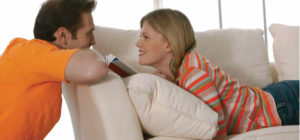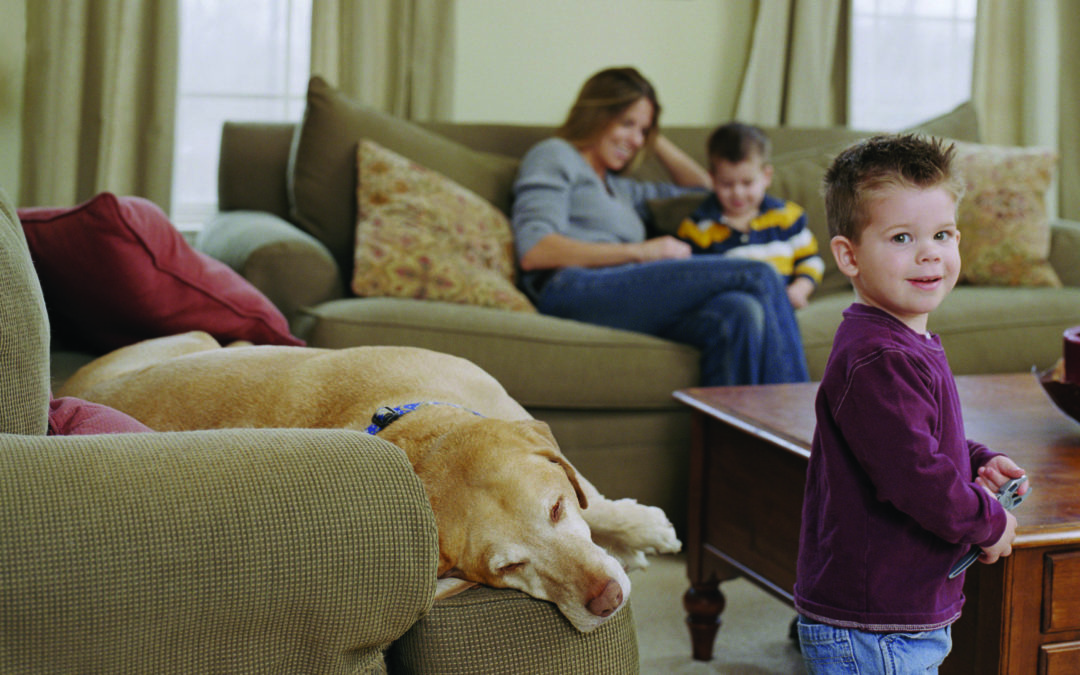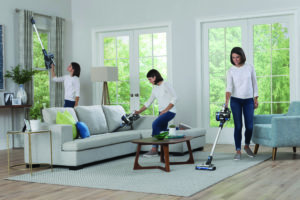Forty pounds of dust, that is! Now, there’s nothing you can do to completely eliminate dust as clothing fibers, pet dander, dead skin cells, and items we track in from outdoors add to the problem daily. According to the Environmental Working Group (EWG), dust bunnies aren’t just unsightly and sometimes allergenic; they contain toxic chemicals. Why? First, products inside your house “shed” chemicals over time — furniture, electronics, shoes, plastics, fabrics, and food, among other things. And, outdoor pollutants enter on your shoes and through open and cracked windows and doors. The good news is it’s pretty easy to keep those dust bunnies at bay and reduce your family’s toxic exposures, too.
 The EWG offers the following tips to safely and effectively remove toxic dust from your home:
The EWG offers the following tips to safely and effectively remove toxic dust from your home:
- Vacuum frequently and use a vacuum fitted with a HEPA (high efficiency particulate air) filter. These vacuums are more efficient at trapping small particles and will likely remove contaminants and other allergens from your home that a regular vacuum would recirculate into the air. Change the filter to keep it working well, and don’t forget to vacuum the stuffed furniture (get under those couch cushions!).
- Wet mop uncarpeted floors frequently to prevent dust from accumulating (dry mopping can kick up dust that simply resettles). Buy wooden furniture or furniture filled with down, wool, polyester, or cotton as these are unlikely to contain added fire-retardant chemicals.
- Wipe furniture with a wet or microfiber cloth. Microfiber cloths work well because their smaller fibers cling to the particles. If you don’t have a microfiber cloth, wet a cotton cloth — it grabs and holds the dust better than a dry one. Skip synthetic sprays and wipes when you dust, they only add unwanted chemicals.
- Caulk and seal cracks and crevices to prevent dust from accumulating in hard-to-reach places.
- Equip your forced-air heating or cooling system with high-quality filters and change them frequently to keep them working well.
- Keep electronic equipment dust-free by damp dusting it frequently; this is a common source of chemical fire retardants in dust.
- Pay special attention to places where little kids crawl, sit, and play. They live closest to our floors and as a result tend to be more exposed to those toxic dust bunnies.
- If you’re dust sensitive, consider asking someone else to do the dusty cleaning.
Often Overlooked Areas
Don’t forget these often-overlooked areas where dust can, and will, hide! Since closets are mainly used as storage spaces, we don’t always think about how much dust can accumulate inside. Luckily, closets can be designed to be easy to clean. Dust settles on solid (e.g., wood or laminate) shelving, whereas air currents move through ventilated wire shelving. Reality is, most of us don’t move stuff on closet floors when vacuuming so dust easily accumulates there. Installing shelving that keeps items off the floors, such as shoe racks, makes cleaning both easier and more efficient. And carpeting traps dust. Hardwood, tile, and vinyl flooring products are wise choices for healthier closets.
Blinds are a popular choice for window coverings, but faux wood or aluminum are easiest to clean because of their smooth surface. Textured blinds collect more dust and are harder to clean. Curtains can be more colorful and more personalized window fashions, but look for curtains that you can throw in the washing machine/dryer or at least regularly vacuum the fabric.
Ceiling fans are a nice addition to many rooms in the home, adding an aesthetic as well as a cooling and heating element to a room. But dusting those fans, particularly the fans reached via a ladder, is no joy. Using a microfiber or damp cloth, as mentioned above, is a good way to remove dust without it falling onto the floor or furniture. Also, there are several ceiling fan brands on the market that have dust-reduction features.
During construction or major remodel of your home, a tremendous amount of drywall dust and other debris can find its way into your vents and ductwork. While it may be possible to cover the vents (or raw openings) during construction, you may want to schedule air duct cleaning immediately before or after you move in—especially if anyone in your household has to deal with respiratory ailments such as asthma or dust allergies.
There are also a few things you can do every day to help keep added dust out of your home:
- Leave shoes at the door–the less you track into your home, the better
- Keep windows closed when the wind is kicking up dust outside (this is also helpful if you have pollen allergies)
- Wipe down pets when they come inside–a quick swipe with a towel over their fur removes surface dust and pollen.
For more information about Healthy Home Tips, visit the EWG website.
For more resources on thoughtful design:
- Visit our blog
- Browse our Her Home™ Magazine
- Thoughtful Design Concepts



